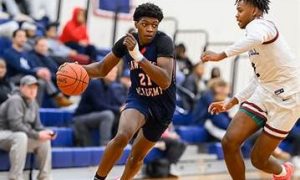Syracuse athletics have some reason for a little quiet confidence just now. The Orange had a solid start to the football season, winning the first six before the recent reversal in fortunes. The women’s soccer program is on course to finish its best season since the late 1990s. The basketball team enters with high expectations.
However, one glaring omission over other D1 programs is the lack of a dedicated diet and nutrition department. The Fizz has been canvassing opinion over the summer, and it seems like it’d be a popular development around campus. It was very eloquently put that at D1 level, everyone’s talented, and it’s attention to detail, or “little x-factors”, that can mean the difference between going to a bowl game or staying home to watch.
Of course, weight management is going to look very different based on both sport and gender. Bulking up a defensive lineman is worlds away from the rowing team having to boil themselves down to minuscule body fat percentages. However, a truism for all is that effective weight management helps make for a “stronger, faster athlete“, in the words of basketball guard Emily Engstler.
The Orange will likely be undergoing some changes soon. Coach Boeheim can’t go forever. A dedicated dietitian (or several) would no doubt be a boon to whoever has to fill those massive shoes. In the meantime, while athletes (and everyone else) have to take their nutrition into their own hands, there are a few salient points to remember.
General
Athletes, especially while still growing, will have caloric requirements above the generally recommended 2000 for women and 2500 for men; it’s not uncommon for those to run 25% over for those involved in sports. Eating well for the big game can’t just happen the week of the big game. Dietary proteins play a crucial part in muscle growth and repair and could help avoid injury.
Staying on top of liquids – studies have shown it takes as little as a 2% drop in hydration levels to affect performance negatively – should be part of any training routine and training regimen overall. A useful phrase from across the pond is ‘5-a-day, which the British health authorities have successfully campaigned with to drive home the need to eat more fresh fruits and vegetables. Five portions is a great starting point for any athlete, male or female, football or rower.
Specialisms
As noted, diet will vary based on the sport. A sprinter or discus thrower may be able to get away with eating from the stadium’s concession stand pre-event, as simple carbs and fats furnish quick energy for bursts of explosiveness. The same wouldn’t apply to a distance runner or rower, say, where endurance is king and energy crashes must be avoided.
The genders also lose weight differently. Women can stubbornly hold more fat. The British Journal of Nutrition found that men on popular weight loss programs lost twice as much weight and three times as much body fat after two months. Weight loss plans for men can feature tailored meal plans, which often contain more calories, as the larger-framed male bodies naturally burn more calories. The good news for women is that it evens out after around six months, requiring burning circa 3500 calories to lose a pound of fat for both.
Conclusion
Weight loss – and weight management in general – are key to performance improvements. Put in the work, and reap the rewards.


















